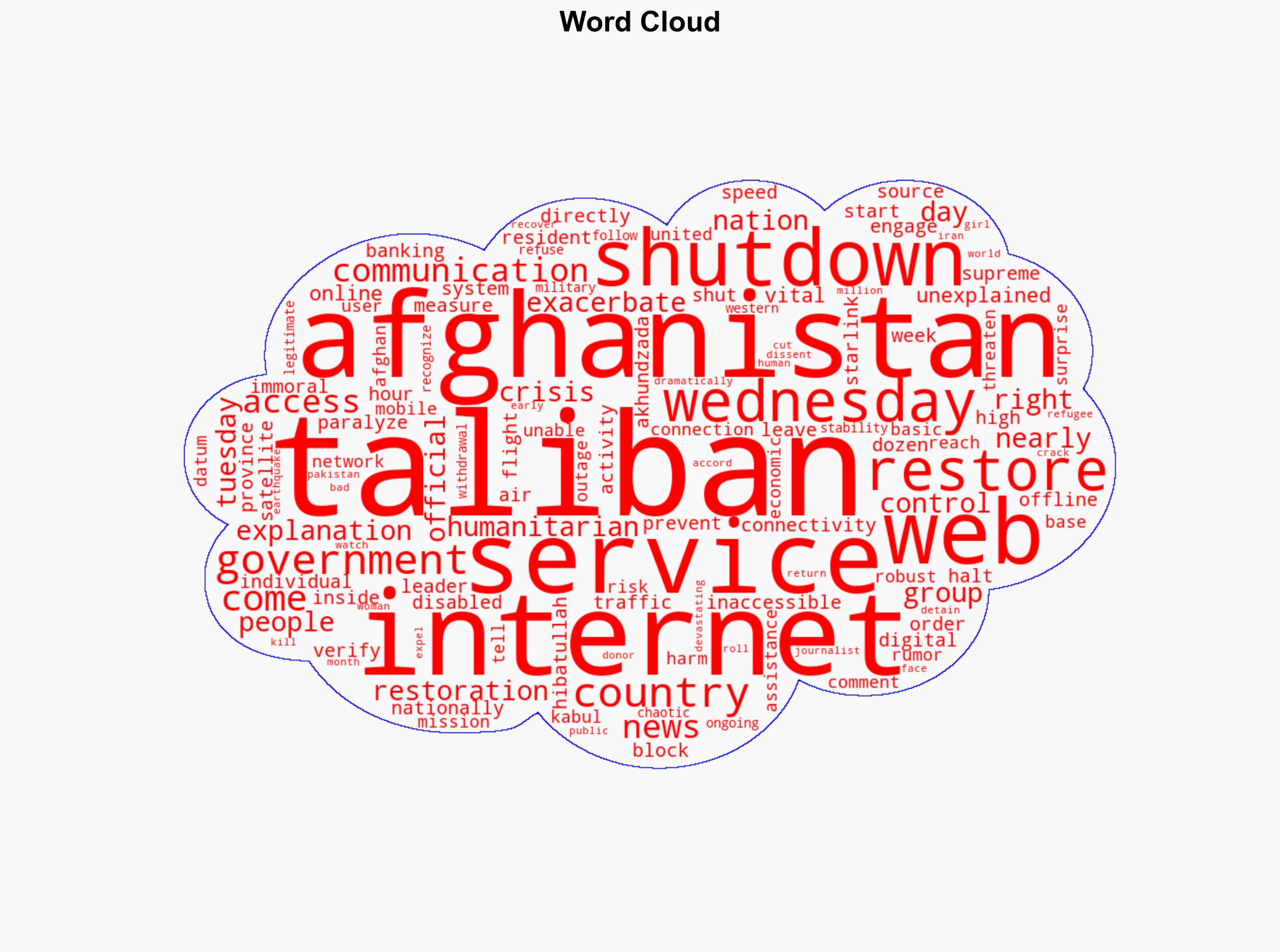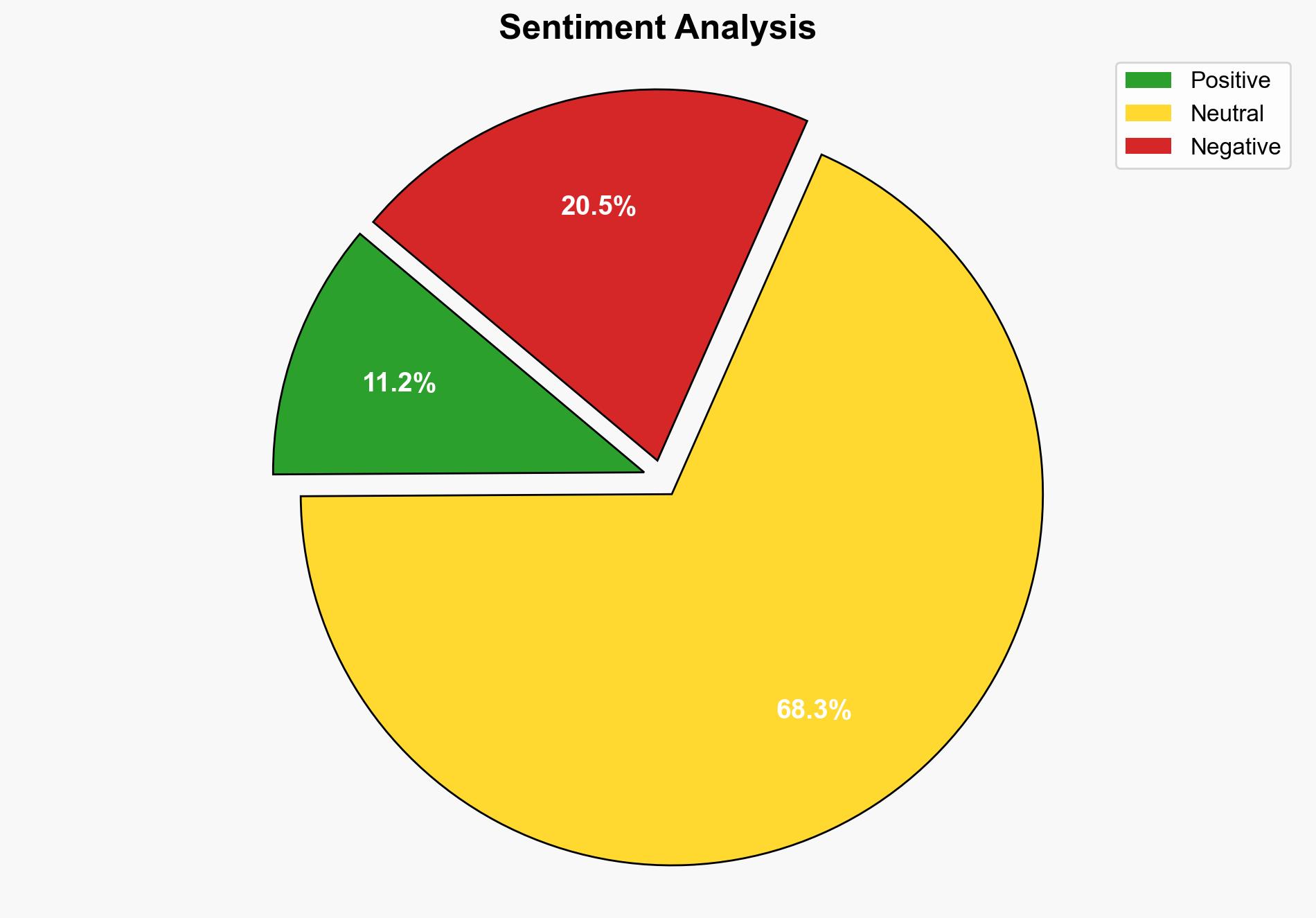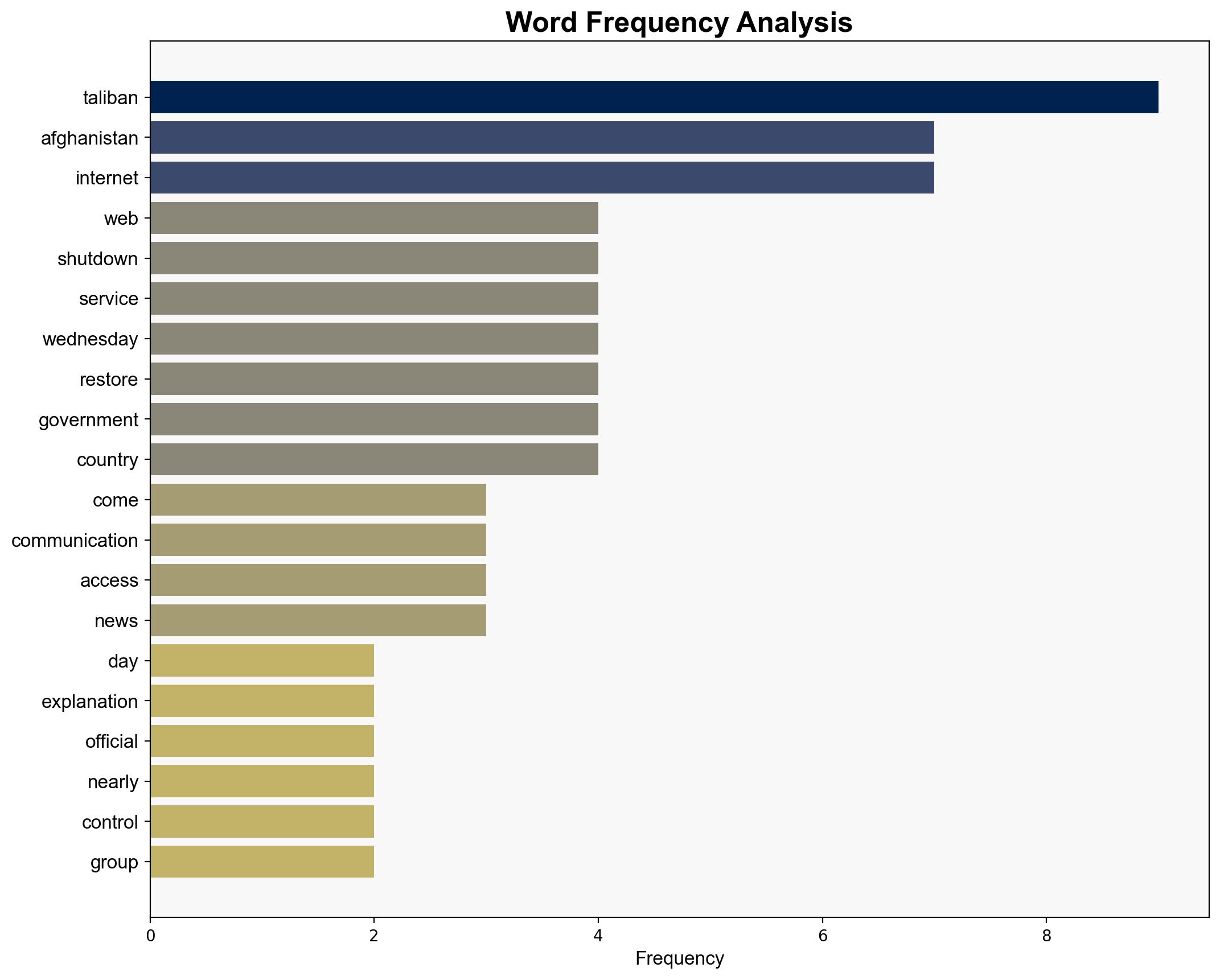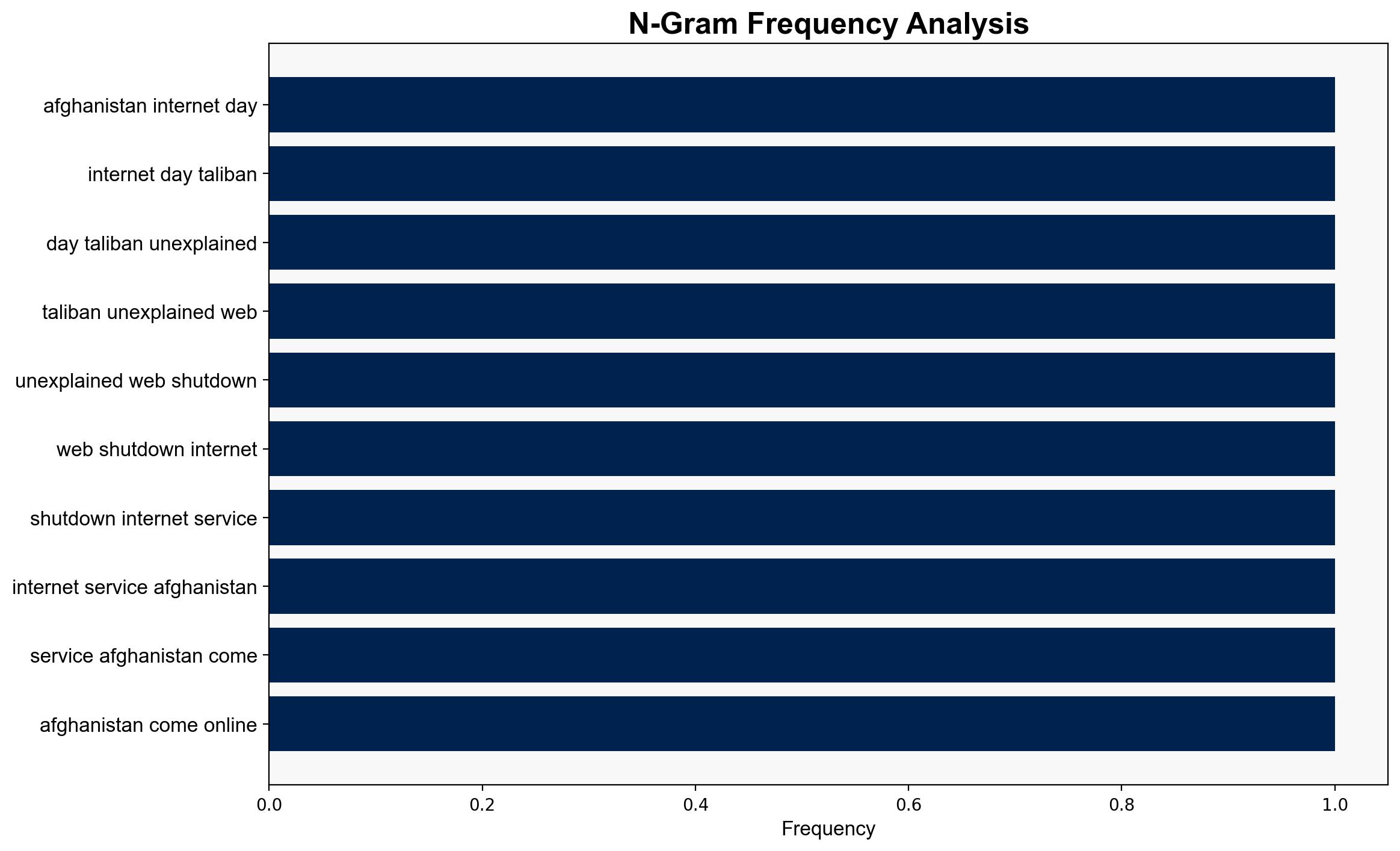Afghanistan gets internet back after Taliban’s unexplained web shutdown – CBS News
Published on: 2025-10-01
Intelligence Report: Afghanistan gets internet back after Taliban’s unexplained web shutdown – CBS News
1. BLUF (Bottom Line Up Front)
The restoration of internet services in Afghanistan after an unexplained shutdown by the Taliban raises significant strategic concerns. The most supported hypothesis suggests the shutdown was a tactical move to control information flow amidst internal and external pressures. Confidence level: Moderate. Recommended action: Engage with international partners to monitor Taliban’s digital policies and prepare for potential future disruptions.
2. Competing Hypotheses
1. **Hypothesis A**: The Taliban shutdown was a deliberate strategy to prevent the spread of dissent and control the narrative within Afghanistan, especially in light of recent humanitarian and political challenges.
2. **Hypothesis B**: The shutdown was a reactionary measure to address specific security threats or technical issues, such as cyberattacks or infrastructure failures, without a broader strategic intent.
Using ACH 2.0, Hypothesis A is better supported due to the timing of the shutdown coinciding with heightened political tensions and the Taliban’s history of controlling information. Hypothesis B lacks corroborative details on specific threats or technical failures.
3. Key Assumptions and Red Flags
– **Assumptions**: Hypothesis A assumes the Taliban has the capability and intent to manipulate digital communications for political control. Hypothesis B assumes potential technical vulnerabilities or external threats.
– **Red Flags**: Lack of official explanation from the Taliban and the sudden restoration of services without clear reasoning suggest potential deception or undisclosed motives.
– **Blind Spots**: Limited visibility into internal Taliban decision-making processes and potential external influences on their actions.
4. Implications and Strategic Risks
The shutdown and restoration highlight vulnerabilities in Afghanistan’s digital infrastructure, posing risks to economic stability and humanitarian efforts. Potential escalation includes increased cyber warfare, further isolation of Afghanistan from international systems, and heightened internal unrest due to restricted information flow.
5. Recommendations and Outlook
- Enhance monitoring of Afghanistan’s digital policies through international cooperation to anticipate future disruptions.
- Support initiatives to bolster Afghanistan’s digital infrastructure resilience.
- Scenario Projections:
- Best Case: Taliban adopts transparent digital policies, reducing international tensions.
- Worst Case: Repeated shutdowns lead to economic collapse and increased humanitarian crises.
- Most Likely: Intermittent disruptions continue as the Taliban balances control with international pressure.
6. Key Individuals and Entities
– Hibatullah Akhundzada: Mentioned as the Taliban’s supreme leader, potentially influencing digital policy decisions.
7. Thematic Tags
national security threats, cybersecurity, counter-terrorism, regional focus





